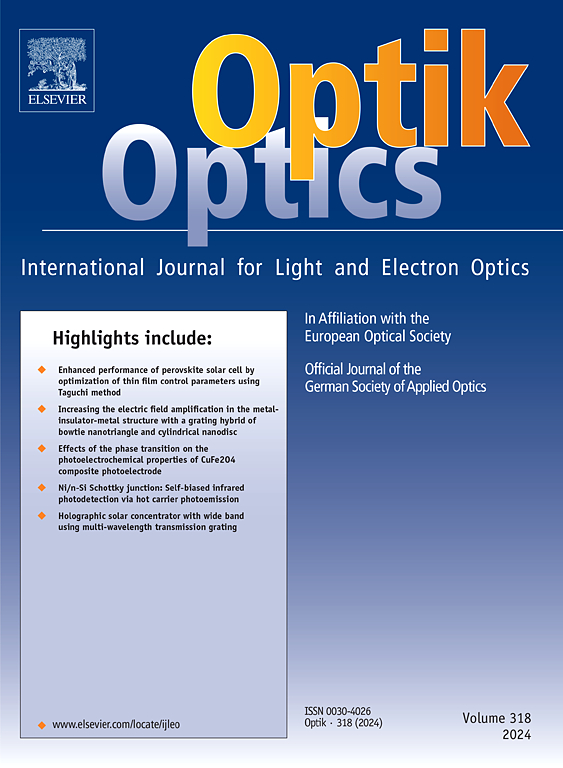π-间隔剂的构型改变及其对吲哚[3,2,1 -jk]咔唑基DSSCs性能的影响
IF 3.1
3区 物理与天体物理
Q2 Engineering
引用次数: 0
摘要
本研究采用π-间隔剂修饰技术,以氰丙烯酸基为受体,对吲哚[3,2,1-jk]咔唑类给体材料进行修饰,设计了9个新分子。吲哚[3,2,1-jk]咔唑基给体材料的π-间隔剂修饰在提高DSSCs效率和光电性能方面具有优势。对新设计的分子进行了几个关键参数的检测,包括吸光度最大值、前沿分子轨道、激发能、光收集效率、Voc和填充因子。所有设计的染料都显著改善了其光学和性能相关特性。在所研究的分子中,IC2的UV-Vis峰吸收范围最宽,为547 nm,激发能最低,为2.26 eV。IC2在偶氮基团周围附加了一个呋喃π桥和一个双呋喃环。此外,具有呋喃π桥的分子具有较高的光收集能力,而具有吡咯π桥的分子如IC9具有最高的开路电压(2.81V)。基于这些有利的性质,具有附加π桥的分子被认为是DSSCs的有希望的候选者。本文章由计算机程序翻译,如有差异,请以英文原文为准。
Configuration modifications of π-spacer and their hypothetical effect on indolo [3, 2, 1-jk] carbazole-based DSSCs performance
In this study, a π-spacer modification technique was employed on indolo[3,2,1-jk] carbazole-based donor materials with a cyanoacrylic acid group as the acceptor to design nine new molecules. The π-spacer modification on the indolo[3,2,1-jk] carbazole-based donor materials offer advantages in improving DSSCs efficiency and optoelectrical behavior. The newly designed molecules were examined for several crucial parameters, including absorbance maximum, frontier molecular orbitals, excitation energy, light harvesting efficiency, Voc, and fill factor. All of the designed dyes significantly improved their optical and performance-related characteristics. Among the studied molecules, IC2, which featured an additional furan π-bridge with an ethyl group and a double furan ring around the azo group, displayed the broadest range of UV-Vis peak absorbance (547 nm) with the lowest energy of excitation (2.26 eV). Furthermore, the molecules with extended furan π-bridges exhibited high values of light harvesting ability, while those with pyrrole π-bridges, such as IC9, showed the highest open-circuit voltage (2.81V). Depending on these favorable properties, the molecules with additional π-bridges are considered promising candidates for DSSCs.
求助全文
通过发布文献求助,成功后即可免费获取论文全文。
去求助
来源期刊

Optik
物理-光学
CiteScore
6.90
自引率
12.90%
发文量
1471
审稿时长
46 days
期刊介绍:
Optik publishes articles on all subjects related to light and electron optics and offers a survey on the state of research and technical development within the following fields:
Optics:
-Optics design, geometrical and beam optics, wave optics-
Optical and micro-optical components, diffractive optics, devices and systems-
Photoelectric and optoelectronic devices-
Optical properties of materials, nonlinear optics, wave propagation and transmission in homogeneous and inhomogeneous materials-
Information optics, image formation and processing, holographic techniques, microscopes and spectrometer techniques, and image analysis-
Optical testing and measuring techniques-
Optical communication and computing-
Physiological optics-
As well as other related topics.
 求助内容:
求助内容: 应助结果提醒方式:
应助结果提醒方式:


